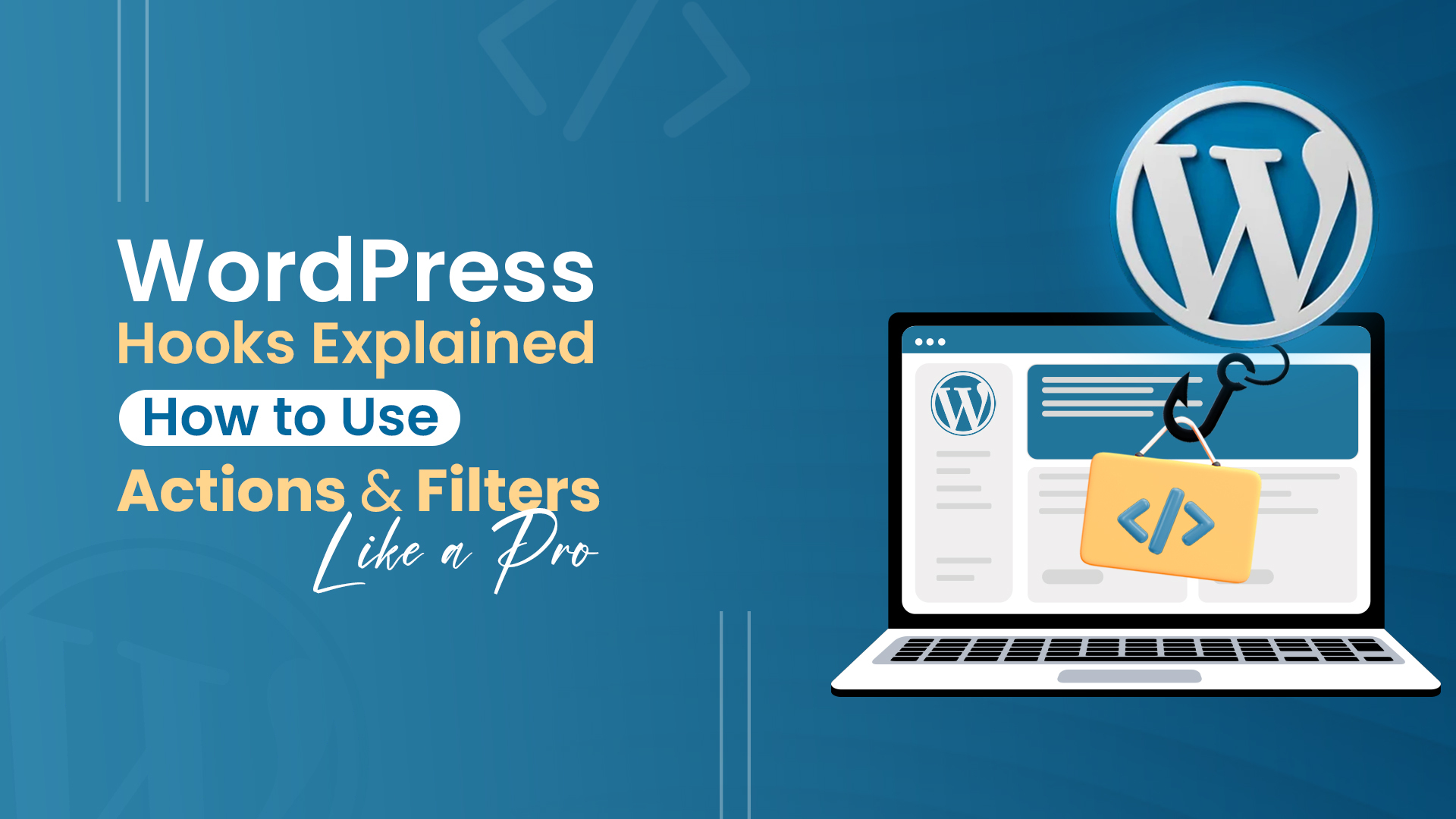If you’ve ever wanted to modify your WordPress site without touching the core files, WordPress hooks are your best friend. Hooks allow developers to add or change functionality easily, whether it’s customizing themes, modifying content, or adding extra features.
Understanding hooks is essential for both developers and site owners. They make WordPress flexible, ensuring your changes remain intact even after updates. This means that instead of modifying core files—which could lead to compatibility issues and lost changes during updates, you can simply “hook” into predefined points in WordPress and execute your custom code.
What Are WordPress Hooks?
A hook is a way for developers to interact with WordPress without modifying core files. Instead of altering WordPress code directly (which can break things), you can “hook” into specific parts of WordPress and run your custom code.
For example, you might want to:
– Add a custom welcome message to your site’s footer.
– Modify the default excerpt length in blog posts.
– Insert an analytics tracking script without editing theme files.
Without hooks, making these changes would be complicated and risky. But thanks to hooks, you can achieve these modifications with just a few lines of code.
There are two main types of hooks in WordPress:
- Action hooks: Used to insert custom functions at specific points in WordPress.
- Filter hooks: Used to modify data before it is displayed.
Action Hooks: Adding Functionality
What are Action Hooks?
Action hooks allow you to execute a function at a specific point in WordPress. You can use them to:
– Add content dynamically (e.g., custom headers, footers, or messages).
– Enqueue scripts and stylesheets.
– Send emails upon specific events.
– Trigger additional functionality when a page loads or a user logs in.
Example: Adding a Custom Script
If you want to load a custom JavaScript file into WordPress, use the wp_enqueue_scripts action hook:
function mytheme_script() {
wp_enqueue_script('custom-js', get_template_directory_uri() . '/custom.js', false);
}
add_action('wp_enqueue_scripts', 'mytheme_script');
This tells WordPress, “When you are loading scripts, also include my custom script.”
How Action Hooks Work
- WordPress runs a predefined action, such as loading scripts.
- Your function is added to that action using add_action().
- WordPress executes your function at the right moment.
Hooks also accept priority values, which determine execution order:
add_action('wp_head', 'my_custom_function', 20);
Here, 20 is the priority. Lower numbers run first, higher numbers run later.
Filter Hooks: Modifying Data
While action hooks add functionality, filter hooks modify existing content before it is displayed.
What Can You Modify with Filter Hooks?
Filter hooks allow you to:
– Modify post content dynamically.
– Change the output of a function.
– Customize form fields, URLs, and more.
Example: Adding a Custom Message to Every Blog Post
add_filter('the_content', 'modify_post_content');
function modify_post_content($content) {
return $content . '<p>Custom message at the end of every post.</p>';
}
This tells WordPress: “Before displaying post content, add this extra message at the end.”
How Filter Hooks Work
- WordPress processes content, such as a blog post.
- Your function modifies the content before it is displayed.
- The modified content is returned and shown to the user.
Unlike action hooks, filters must return a value—otherwise, WordPress will not display anything.
Removing Actions and Filters
Not all default WordPress features are useful for every website. Sometimes, you may want to remove an action or filter to improve performance or clean up unwanted output.
Why Remove Hooks?
– Prevent unnecessary scripts from loading.
– Override functions added by plugins or themes.
– Optimize site speed and reduce clutter.
Example: Disabling WordPress Emoji Scripts
By default, WordPress loads extra scripts for emoji support, which is unnecessary for most websites. You can remove them with:
remove_action('wp_print_styles', 'print_emoji_styles');
remove_action('wp_head', 'print_emoji_detection_script');
This improves page load time by preventing WordPress from adding unwanted scripts.
Creating Custom Hooks in WordPress
Sometimes, the built-in WordPress hooks are not enough. If you are building a theme or plugin, you may need to create custom hooks to allow others (or yourself) to extend functionality later.
Think of custom hooks as doors you build into your code—so future developers, including yourself, can enter and extend it anytime.
Creating a Custom Action Hook
To create your own action hook, use do_action(). This allows other developers or yourself to hook into your function later.
Example: Adding a Custom Hook in a Theme
function my_theme_header() {
do_action('my_custom_hook'); // Other developers can hook into this
}
add_action('wp_head', 'my_theme_header');
Now, anyone can attach a function to ‘my_custom_hook’ like this:
add_action('my_custom_hook', 'add_custom_header');
function add_custom_header() {
echo '<p>Custom header content goes here.</p>';
}
This ensures flexibility without modifying the original theme or plugin code.
Practical Use Cases of WordPress Hooks
Hooks are not just theoretical—they are the foundation of WordPress customization. They allow developers to modify functionality without altering core files, making updates seamless and ensuring long-term maintainability.
Example: Adding Google Analytics Tracking Code
To track website visitors, you need to insert a Google Analytics script into the <head> section of your site. Instead of modifying theme files, use the wp_head action hook:
<?php
function add_google_analytics() { ?>
<script async src="https://www.googletagmanager.com/gtag/js?id=UA-XXXXXXXXX-X"></script>
<script>
window.dataLayer = window.dataLayer || [];
function gtag(){dataLayer.push(arguments);}
gtag('js', new Date());
gtag('config', 'UA-XXXXXXXXX-X');
</script>
<?php } ?>
add_action('wp_head', 'add_google_analytics'); ?>
This ensures that Google Analytics is integrated properly while keeping the theme files untouched.
Conclusion
WordPress hooks are a powerful way to customize your site without touching core files. By using action hooks, you can add new functionality, and with filter hooks, you can modify content before it’s displayed. This keeps your site flexible, secure, and easy to maintain, even after updates.
Whether you’re adding custom scripts, modifying content, or optimizing performance, hooks give you complete control over your WordPress site. Want to enhance your WordPress site effortlessly? Let our experts help, visit our website to learn more!










